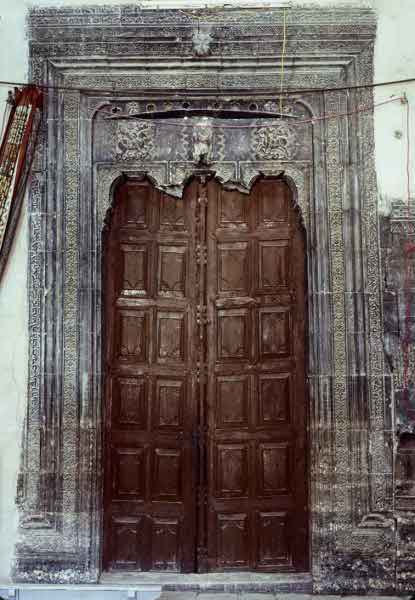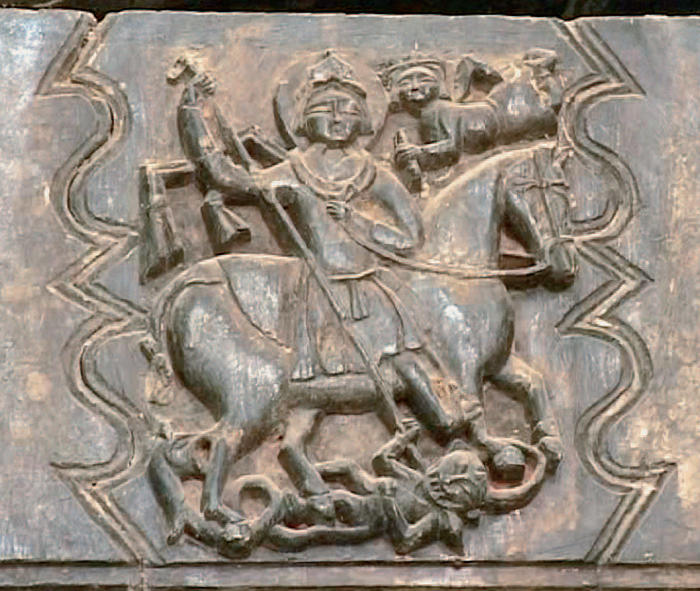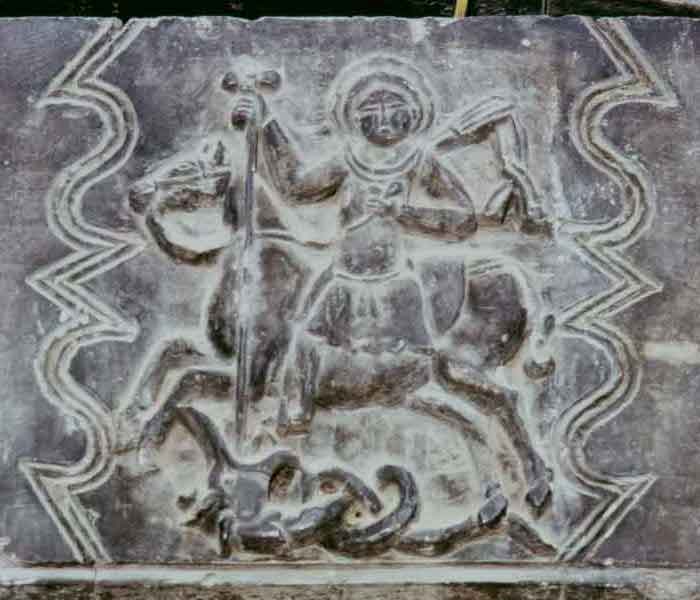Shop Amazon - Create an Amazon Baby Registry

Create an Amazon Business Account
Portal, Monastery of Mār Bahnām, Syriac Jazīrah, mid-13th century AD.

Portal with carved figures.

Image Source: Guarding the Entrances-Equestrian Saints in Egypt and North Mesopotamia by Bas Snelders and Adeline Jeudy

Portal with carved figures.
Monastery of the Martyrs Mar Behnam and Mart Sarah
DESCRIPTION
The 'royal gate', located in the church interior, allows access from the nave into the narthex, in which the apse and altar are located. The gate is framed with intricately carved bands of inscription and ornamentation, with a lion's head protruding from the upper center of the gate. The lower lintel features three carved figures, two of which are mounted on horseback, slaying a demon and serpents beneath them. Scholars have argued that these equestrian figures represent Mar Behnam and Khidr, and echo the sculptural figures of saints portrayed throughout the greater complex. Wolper, who has suggested that this pairing of saints was a common practice in the medieval period, notes that their likeness to popular representations of Saint George, another saint with significant following in Mosul, led to the complex's multitude of associations.
The Monastery of the Martyrs Mar Behnam and Mart Sarah was a Syrian Orthodox monastic complex situated just south of Mosul and east of the ancient city of Nimrud. The site was expanded and modified over time, with the earliest parts of the complex dating back to the twelfth and thirteenth centuries, though use of the site is thought to extend back to the fourth century. While widely known for its associations with the Christian saints Mar Behnam and Mart Sarah, children of Sanherib, the fourth century king of Athor who arranged for the murder of Behnam and Sara upon their conversion to Christianity, the site also shares ties to Khidr, a legendary figure in Islam whose narrative evokes rebirth and renewal and is associated with numerous sanctuaries throughout the region.
Stylistically, the monastery's iconography bears the hallmarks of traditional Islamic sites in medieval Mosul, demonstrated by its robust carvings. Sculptural reliefs are abundant in both the church complex and the mausoleum, particularly around the portals and tomb. Frequent among the site's visual vocabulary are figural depictions of lions, fantastical serpents, Christian and clerical figures, horsemen combining the attributes of Mar Behnam, al Khidr and St. George, and non-figurative vegetal and geometric patterns.
Sources: Wolper, Ethel Sara. "Khir and the Changing Frontiers of the Medieval World." Medieval Encounters 17, no. 1/2 (March 2011): 120-146.
Source: "Monastery of the Martyrs Mar Behnam and Mart Sarah, Al-Hamdaniya, Iraq" ArchNet
The riders are referenced as figure 303 in The military technology of classical Islam by D Nicolle
303. Relief, mid-13th century AD, Syriac Jazīrah, in situ, Monastery of Mār Bahnām, near Mosul.
See also Jacobite-Syrian Lectionary of the Gospels, Monastery of Mar Mattai near Mosul, Iraq, c.1220. Vatican Library, Ms. Syr. 559
Relief, Aleppo Gate, 1233-1259 AD, Jazīrah, in situ, al Hān, Jabal Sinjār.
Kitab al-Diryaq (the Book of Antidotes) by Pseudo-Gallen, northern Iraq, mid 13th century
13th Century Illustrations of Costume & Soldiers




